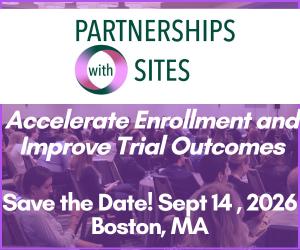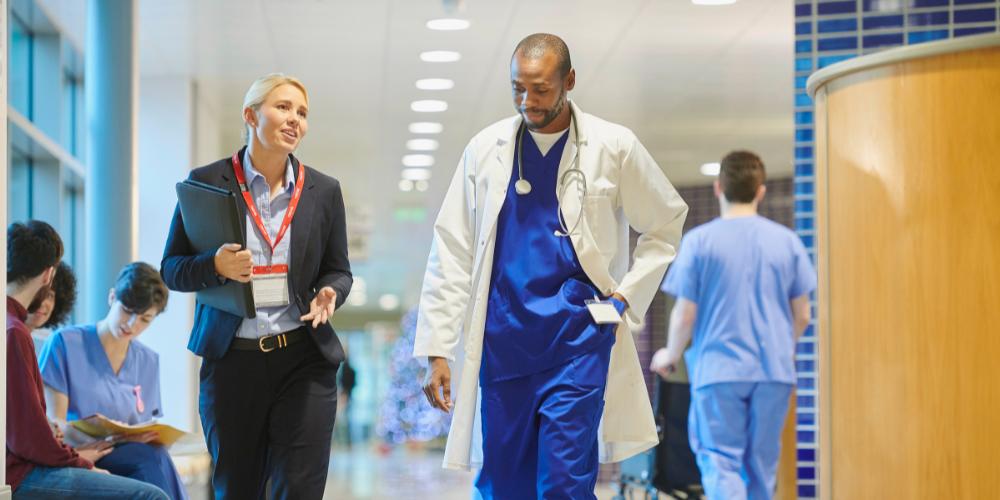Johns Hopkins Works to Make Clinical Research a Reality for Community Physicians
Community physicians and providers are a critical piece of the puzzle in connecting patients to clinical research as a care option. Daniel Ford, MD, MPH, Director, Johns Hopkins Institute for Clinical and Translational Research, shares how the ICTR is supporting community physicians to participate in studies and demystifying clinical research to the community it serves.

How is the Johns Hopkins ICTR engaging with its community on clinical research?
We’re engaging with the community on clinical research in a few ways. One is how we can make a protocol better, to make it easier to participate. But we’re also speaking with the community and getting their feedback on what types of studies are important to them, and where they would like to see more studies.
We’ve worked with the community on how we can use their electronic medical record data for research, and how they can access that data as well. We have also focused a lot on understanding the research participant experience. We do assessments every six months via survey. It’s important that we stay focused on their total research experience and highlight people’s positive experiences participating in research studies.
What are the areas you’re currently focused on now?
We're focusing now on the return of results. It depends on the study, but it's possible. During COVID-19, we did a trial of outpatient convalescent plasma for people with COVID. Over the course of 14 months, we recruited 1300 people. Every single one of them received a letter that informed them as to whether or not they received the placebo or the real effective convalescent plasma before the results were published in the New England Journal. We were able to close the loop fast. It requires extra resources, but it’s what patients are really looking for.
Healthy aging is important for our community. We are focused on how we can develop protocols that give patients more control over their lives. Those are not always drug trials; it could be how they can better self-manage.
"We want to be a “trustworthy” partner, and that starts with transparency. So much of biomedical research remains a mystery to people. The more you can bring it into the open, the better."
You’re also working with physicians; can you tell us about how you’re engaging them about clinical research?
We have a monthly meeting with physicians where we consult them and use them as a sounding board. They tell us that they're hesitant to participate in trials, because they're so busy. They’ll give us feedback on a trial, such as “You can try that, but there’s no way we could ever implement that in clinical practice.” Physicians in our area are busy; there is a lot of change and a very high patient demand.
That is useful to us. The endpoint is not that the study is done; the endpoint is that the people – clinicians and patients and policymakers – change what they do based on the results of the study. You must build implementation into the design of the study. It’s about dissemination, implementation and change.
What are some of the hurdles that physicians face in participating in a study?
One challenge is having the resources for full-time coordinators. With community practices, we know that it can be very overwhelming because the first time they participate, they have to spend a lot of time on training, on adverse event reporting, etc. The practice has to commit to participating in studies, with 1-2 full-time research coordinators. Those have a higher chance of being successful, but require that long-term commitment. We provide extra support to community practices that are participating as a site for the first time.
"[Research is] an opportunity for these community health systems and doctors to participate in studies that they may have interest in, to help them provide better care in their practices."
How are you connecting physicians to research opportunities?
In the past, I was Program Director of the Primary Care and Health Services Research training program. That program supports primary care providers for 2-3 years to become researchers, and provides them the training and tools to do so.
We have also created the Johns Hopkins Clinical Research Network, which is a partnership between Johns Hopkins and community-based health systems, such as Luminis Health System in Annapolis and TidalHealth on the Eastern Shore, etc. They are helpful to reach out to, to get a different perspective on whether or not a protocol would be important to them and if they would participate. To be able to get a study going, it’s necessary to have a big net of potential sites because you can’t predict whether or not a practice will be able to participate. Over the past ten years since we began the network, we usually have 15-20 different protocols going. The majority are funded by PCORI, NIH, foundations, etc. It’s an opportunity for these community health systems and doctors to participate in studies that they may have interest in, to help them provide better care in their practices.
What is the support you provide?
First, we give them an assessment of the feasibility of the study. We look at their budgets, we outline how many patients they will have to recruit to not lose money on the study. We have a pool of research coordinators that they can utilize. We give them an approach to recruitment. We provide support to use their electronic medical records for recruitment. However in our area demands for clinical care are so high right now it is difficult to find the time for research. Because of that, there are occasions where I tell a site that they are not realistically ready to do research. That they would have to get a handle on the clinical side and their staffing to be able to do a study.
Can you share an example of such a study?
We’re doing a study funded by the NIH – PREVENTABLE – randomizing patients over 75 to statins or placebo. In that study, we need the support of their primary care physician for the patients to join the trial, particularly in dealing with any potential side effects. We have many more positive responses from physicians than negative about working with them on the study, but that’s because the burden of participation is not fully on them. We just need the primary care team to support a patient decision to enroll in a study and take a study drug for five years.
What is your advice for building trust with the community your organization serves?
We actually use the term “trustworthy” to define our actions. We want to be a “trustworthy” partner, and that starts with transparency. So much of biomedical research remains a mystery to people. The more you can bring it into the open, the better. We’ve done that in a few ways with our community. We’ve done it through visiting the IRB. We tell people, “Come to an IRB meeting, see what it’s like.” But it’s not just as easy as having them attend. It’s crucial to have somebody guide them through what’s going on.
We’ve done it through posting our results of the research participant experience on our ICTR website as well as bringing people into true leadership positions. The ICTR Leadership Council has community research members. The trainees and pre-docs – most of our medical students – have to present their research to the community research advisory board at the beginning and at the end of their training.
"You must bring [the community] in for real decisions. Trustworthiness includes competence in research, demonstrating research is ethical and we are reliable partners."
What has the result of those actions been in demystifying research?
The community sees how hard research is, and how long it takes for a clinician to get to the point of answering a scientific question. They see that there is a lot of incremental work that comes with it.
We’ve invested in the training of community members so that when they join a research meeting, they're not totally overwhelmed. We try to give them many opportunities to comment on policies that are governing our actions. For example with data, we’re trying to decide what research data should go in the electronic medical record. The more you bring them into your important decisions, the more they build that experience and expertise, and that hopefully leads to trust.
What would be your advice for demonstrating trustworthiness?
You must bring them in for real decisions. Trustworthiness includes competence in research, demonstrating research is ethical and we are reliable partners. We follow through on our promises, set it up in a way that community members are really able to give important feedback. They don’t have to be involved from A to Z; it can be better sometimes to say, “We have a key decision, and we want your advice.” Give them the long-term picture, and don’t forget to close the loop and give back that information to everyone involved when the project is over.
For more information on CRAACO: Clinical Research as a Care Option, visit CRAACOevent.com.







